Views
Traditional Bengali Sweets You Must Not Miss!!!
Also Read,
100+ Mouth-Watering Traditional Bengali Sweets with Images and Recipes
Mishti Doi (Sweet Curd)
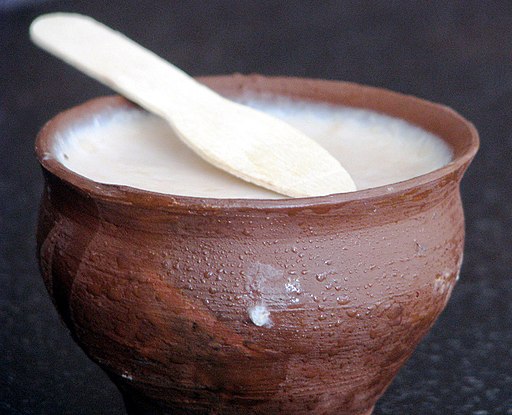 |
| Mishti Doi |
When it comes to traditional sweets of Bengal, it cannot be started without Mishti Doi. It is a world-famous recipe that people are craving for. The sweet-lovers from all over the world order for the most delicate sweet item from Bengal to celebrate auspicious occasions. The texture of its light brownish shade, the heavy sweet taste, and its ancient tradition of making are maintained completely from the day of innovation.
Pantua
 |
| Pantua-Mouthwatering Delicacy |
Another traditional Bengali sweet is Pantua. Though it is look-alike Golap Jamun, the process of making is absolutely different. Any type of occasion from puja to wedding people of Bengal prefers this soft and crumbly sweet very much. As we all know that Bengalis are crazy about sweets, so they can’t resist themselves from this particular sweet without indulging it at all. The shopkeepers sell the sweets in numbers as per customer’s requirements.
Pantua is a dark brown round-shaped sweet, made from chenna (curd cheese or cottage cheese), maida (white flour), suji (semolina) and dripped and soaked in white sugar syrup. The balls are deep-fried in refined oil and then dipped in syrup to absorb the sweetness inside to nourish the ultimate taste. The outer part of the Pantua is a little harder, but it’s very soft from inside. It is usually served hot because when it goes into the mouth, it very easily melts inside, but many people prefer it cold, still, the taste never gets compromised at all.
Dorbesh/Darbesh
 |
| Dorbesh |
Darbesh is a variety of laddu. We know that laddo can be made of moong dal, besan, boondi as well, but Dorbesh is only made of Boondi and the size is also bigger from the regular laddu. This particular sweet is a very valuable addition to the traditional Bengali sweets. Dorbesh is mainly preferred for puja purposes. Many people served this sweet as Bhog to the idols with the belief that it is made with a pure heart. Dorbesh is easily available in most of the sweet shops in Bengal and it is cost by per piece.
The special puja sweet is made of besan, khowa (mawa), ghee or oil, sugar and a variety of nuts. First, the boondi is made with the batter of besan and sugar, which is deep-fried in ghee or refined oil. The big balls of laddu then to be made with the perfect mixture of sugar, Boondi, khowa, and nuts respectively. Many sweet shops sprinkle a little bit of sugar powder and dried nuts from the above.
Sondesh/Sandesh
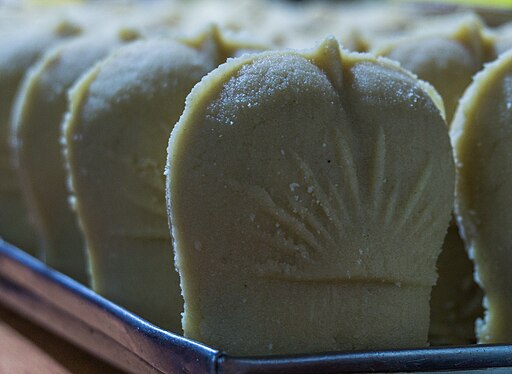 |
| Sondesh/Sandesh |
Sandesh is another famous sweet in the traditional Bengali sweets. It is an integral part of Bengal. The word “Sandesh” means news. In the very past, People used to carry home-made sweets to deliver social news in different places. It's believed to be very lucky. The term ‘Sandesh’ by the time started to be used for the specific sweet item. The special occasions like puja, wedding, and other types of celebrations can’t be complete without Sandesh. Traditionally these specific sweet varieties are sold per piece.
There are a number of flavors that can be found in Sandesh with different shapes of course. The tradition of the process of making Sandesh is still now maintained properly, though various kinds of innovation have been adopted by the time. Ingredients such as channa, milk, condensed milk, sugar, jaggery are some key ingredients of Sandesh, besides these ingredients such as chocolate, dried mango, Pista is being used in Sandesh to add a stylish flavor as well. Jol Bhora Sandesh, Nalen gurer Sandesh, aam Sandesh, chocolate Sandesh are some famous variants of this sweet.
Check out my post -> How to Prepare Sandesh at Home? where I have explained in detail with images and video about how you can easily prepare one of the most famous Bengali sweet Sondesh or Sandesh and surprise the guests at home.
Lobongo Latika
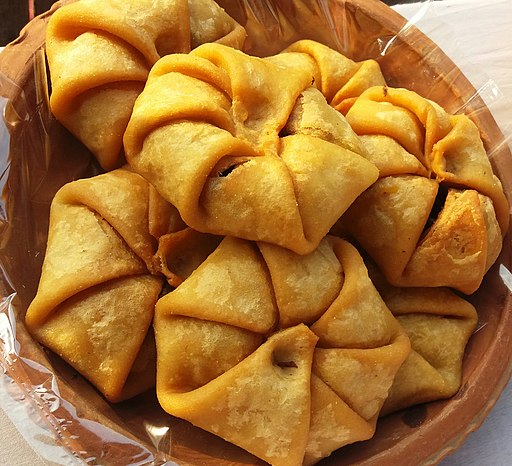 |
| Lobongo Latika |
This is another most interesting sweet in Bengal. It is one of the most innovative sweets in India. Lobongo Lotika looks like a small closed envelope, which is sealed with labango (clove). As the process of making is a little lengthy, it is made on special occasions such as Durga Puja (the biggest festival of Bengalis), wedding, rice ceremony, thread ceremony, etc. This sweet can be in homes also. Different sweet shops use some key ingredients to make their sweet special and iconic.
The making of the famous traditional Bengali sweet Labango Latika is very easy but lengthy. First, sweet dough is made with maida and sugar and ghee. The inner filling is made with khowa (mawa), grated coconut, raisins, nuts, and cardamom. The total packed envelope is then sealed with a clove tightly and deep-fried in ghee or refined oil and then needed to soak in sugar syrup for a long time. The taste of Labango Latika is really heavenly. It melts very easily in the mouth and the texture of coconut, cardamom, nuts created an excellent taste.
Sitabhog
 |
| Sitabhog |
Sita bhog is another wonderful dessert of Bengal. It looks like rice but the taste is sweet. This particular sweet is also an innovation of Burdwan. It is one of the most ancient sweets of Bengal. It is conventional that in 1904 this sweet was regularly served to Lord Curzon, then gradually it spread all over Bengal then worldwide. The Bengalis love to have this special traditional sweet on some special occasions. The making process is not very simple like other sweets. The shopkeepers sell this particular sweet in grams and kilograms in the earthen pots.
The dough is prepared with powder rice, Chenna. The rice looking Sita bhog is made by breaking the dough thoroughly and it is soaked in regular sugar syrup. People who don’t know about this traditional Bengali sweet Sita Bhog can be misunderstood by Basmati rice. The tradition is maintained properly from the initial stage of innovation. Sita bhog is served with the small Gulab Jamun to make the taste excellent.
Mihidana
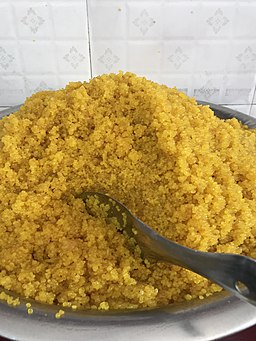 |
| Mihidana |
Another name of Mihidana is Gobindo bhog. Gobindo means god, Krishna. So, it is very easily predicted that Mihidana is a very pious sweet among all the traditional sweets of Bengal. The meaning of Mihidana lies in the name only. “Mihi” means fine and “Dana” means cereals. Mihidana is also an innovation of the Burdwan district of West Bengal. It looks like a small boondi sweet. Any special devotional occasion Mihidana is served to the Gods and Goddess.
The preparation of traditional Bengali sweet Mihidana is quite simple but complicated. It is already known that Mihidana is a miniature of boondi. So the process of making Mihidana like boondi. Flour, powder rice, sugar, and saffron are the key ingredients of Gobindo Bhog. The attractive yellow color of the Mihidana is flourished for the saffron mix water and then soaked in sugar syrup. This sweet is served in grams and kilograms in earthen pots or paper box as it is quite a
dry sweet.
Nikuti
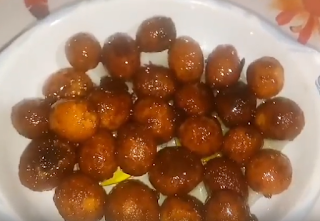 |
| Nikuti |
Ingredients like flour, khowa kheer, sugar syrup, sugar, and curd cheese are required to make the item. The look and its taste have won over thousands of hearts from the ancient days. Nikuti is usually selling in grams and kilograms.
Chom Chom/ Cham Cham
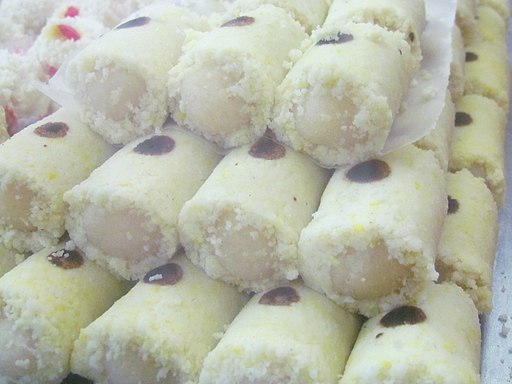 |
| Khirer ChomChom |
The white juicy truly delicious sweet is Chomchom. The name is really funny indeed. Many Bengalis love this sweet very much. Chomchom can easily enrich the heart with its smell and taste. People can find this small cylindrical white sweet in any sweet shop in Bengal. The presentation of this traditional Bengal sweet wins thousands of hearts for its delicate taste. It comes in various vibrant colors to impress the sweet lovers.
The recipe of traditional sweet of Bengal, Chomchom is not so difficult and different from other sweets of Bengal, such as langcha, and so on. Flour, curd cheese, sugar, cream, and saffron are the main ingredients. There are two main types of Chomchom found in Bengal. One is made of curd cheese and wrapped with sweet flour dough and another is made with hard curd cheese. Both types are heavenly in taste. Many shops use saffron to give a delicate look to it.
Kheer-Kadamba
 |
| Kheer Kadam |
The traditional Bengali sweet Kheer Kadam is exotically made with chenna, khowa, and powdered sugar. The white color dry sweet is love and it is served to the guests on several special occasions. The dough of the sweet is made very softly to make the sweet spongy and fluffy So that, when it goes into the mouth, it melts very easily. The outer coated dust kheer is a trick that helps to pop up the inner juicy flavor and provides a heavenly feel very well.
Chhanar Jilipi
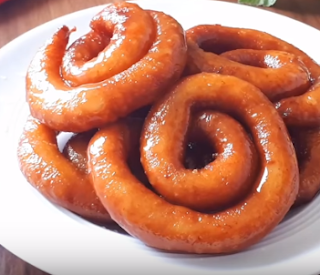 |
| Chhanar Jilipi |
Ingredients of Chhanar Jilipi is not very different from other sweets. The same chenna, khowa, sugar syrup are being used to prepare the sweet. Bengalis usually have the sweet in regular and special ceremonies as well. It is believed that; this special sweet is the innovation of the famous 'Thakur Bari' of Jorasanko Kolkata. So it has another level of glory to the Bengalis. This innovative sweet is easily available in every sweet shop in Kolkata and West Bengal as well.
Joynagarer Mowa
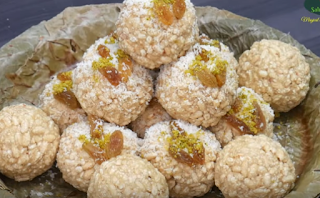 |
| Joy Nogorer Mowa |
It is a kind of laddu that specially created in Joynagar in South 24 Parganas in West Bengal. This traditional Bengali sweet can easily compete with any old traditional sweets in taste. All the Bengalis eagerly wait for the season to enjoy the sweet to the fullest.
Joynagarer Mowa is made of puffed rice, Nalwn Gur, and ghee. It looks like big laddus. All of the ingredients are mixed properly with the exact portion so that the exotic taste can melt the hearts of thousands. The shopkeepers sell them by pieces and many prefer the sweet to gift their sweet lover friends and relatives.
Lengcha
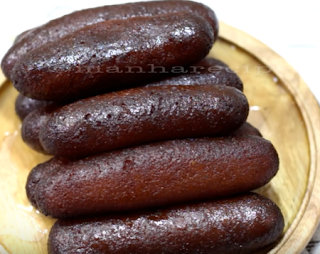 |
| Lengcha |
Now we know that most of the Bengali sweets are made from curd cheese and milk, Langcha is not different from it. The shape of Roshogolla, pantua, and Langcha are mostly the same. Along with the curd cheese; khowa (mawa), flour and cardamom are added to make the dough. Deep-fried in ghee or refined oil and then like Roshogolla, Pantua; the fried balls are soaked in cardamom flavored sugar syrup to make it spongy sweet.
Patishapta
 |
| Patishapta- Very Famous Traditional Bengali Sweet |
Patisapta is a special sweet that is made on special occasions only. It is a very homely sweet that is made on Poush Sankranti that falls in January. Patisapta looks like rolls, but the taste is very sweet. This specific item is a very old traditional Bengali sweet. These crepes are popularly known as 'Pithe'. The process of making this sweet is very lengthy but it's innovative though. Mostly the villagers in the ancient period have started to make this wonder item.
As we know that Patisapta is a type of Pithe and it is made of rice powder, all-purpose flour, grated coconut, date palm syrup (which is popularly known as Patali Gur). The batter of flour and milk first made a chilla then it rolled up with a filling of jaggery mixed coconut or khowa- kheer. The most interesting part of the sweet is, people of Bengal love to have the Patisapta by sharing with all. Nowadays professionally the sweet makers are selling in shops.
Roshogolla/ Rasgulla
 |
| Roshogolla-The Most famous Bengali Sweet |
The most famous sweet among all sorts of traditional Bengali sweets is Roshogolla. It has created a history in the sweet industry. Special ball size white juicy sweet made from chenna is a love for many sweet lovers. It has been globally accepted that in 1920 "Roshogolla" is the lifetime achievement of an ordinary Bengali man Shri Nabin Chandra Das. His hard education and trials have created this world-famous sweet. Like other sweets, Roshogolla also has food per piece as per requirements.
The ingredients of the sweet are very easily available in Bengal. As the state is very close to River Hoogly, and their main staple is rice, cows are easily available here. So, most of the sweets are being made with dairy products only. Roshogolla is also not different from it. Curd cheese and semolina are the key ingredients to make this tasty sweet. The dough balls dipped in the sugar syrup to absorb the sweetness inside. The taste can be enjoyed to the fullest if it is served hot.
Shorbhaja
 |
| Shorbhaja |
They can innovatively think of the utilization of every dairy product to make delicious food items, specialty sweets. Shorbhaja is one of them. The upper dark layer of the milk is very tasty, so why waste! They have created this sweet item very successfully.
The main ingredient of the Shorbhaja is clearly mentioned in the name itself. The milk is boiled very nicely until the Malai is made on the upper surface, then very nicely it is taken out and mashed with sugar to make a tight dough. The shape of the square is given, fried deep in ghee or refined oil. Many sweet makers preferred dry fruits to sprinkle on it to make the taste extraordinary.
Raj Bhog
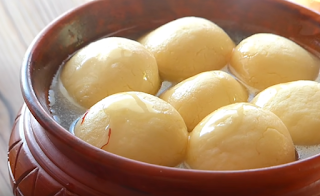 |
| Rajbhog |
The delicious traditional Bengali sweet Rajbhog recipe is very simple, just the same as Roshogolla. Curd cheese, sugar, cardamom, saffron, crushed dry fruits are the key ingredients to make it tasty. Shopkeepers sell this sweet in pieces and many of them export the sweet in different foreign countries as well. The big white color juicy sweet balls are the love of many people all over the world. So, if you are a sweet lover then Rajbhog is a must-try.
Kacha Golla
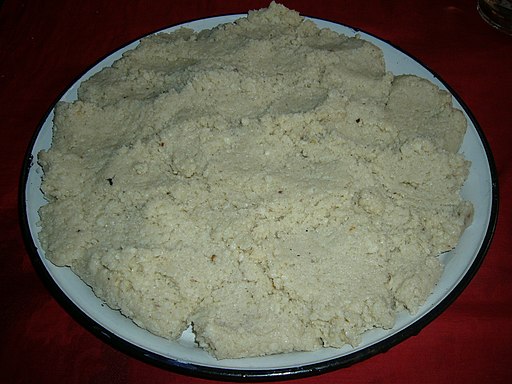 |
| Kachagolla |
Kacha Golla is another version of Roshogolla. The texture is different from others. The meaning of Kacha Golla lies in the name only. Kacha means non-fried and Golla means balls; so, Kacha Golla means the non-fried sweet balls. It is a soft traditional Bengali sweet that is made purely of milk and milk products. People of Bengal prefer this sweet in their special festivals and ceremonies. Widely it has been accepted that Kacha Golla is quite a healthy dessert among all the traditional Bengali sweets. The balance of sweetness is perfectly maintained to extract the proper taste. We have seen that most of the Bengali sweets are made by deep-fried and soaked in sugar syrup. Unlike those Kacha Golla is made differently.
The main ingredients are curd cheese, cardamom, rose water, saffron, pasta. All of the ingredients can be easily available. The perfect dough is made very softly to make the sweet spongy so that it melts into the mouth like marsh-mellow.
Kalojam
 |
| Kaalo Jaam- Type 1 |
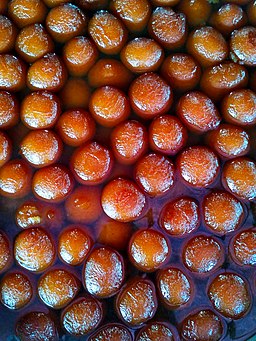 |
| Kaalo Jaam- Type 2 |
Kalojam is categorically the same as Pantua. The name Kalojam has come by its color. The usual color of the fried traditional Bengali sweets is brown but this particular sweet is fried very much so that it turns black. According to the texture; Kalojam is a little harder than the Pantua. The process of preparation is not very complicated, but it requires dedication and patience to make the utmost taste. Kalojam is specially made for several special occasions and celebrations. Especially this sweet is coated with silver paper to provide the royal look. The soft and spongy sweet is usually sold in pieces.
Ingredients like mace, sugar, water, milk powder, cream, flour, semolina, are very important. The dough is fried in deep ghee or oil to make the harder outer layer. The fried Kalojam then soaked in the usual sugar syrup to absorb the sweetness. Socially this sweet is very popular to present on special occasions and hon’ble people from the very last days.
Ledikeni
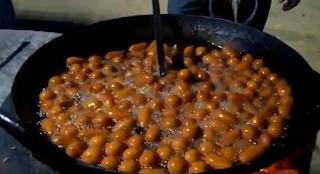 |
| Gorom Gorom Ledikeni-Ready to Serve |
The sweet likens are very similar to langcha, but it is much softer than Langcha. Ledikeni is made of curd cheese, milk powder, cardamom, and flour. The dough is much softer though it is fried just langcha it is very soft and spongy. The taste and shape are also different from each other. The sugar syrup makes the sweet more soft and spongy.
The above-mentioned sweets are not enough, there is more number of variety of sweets available in West Bengal. Those are creatively modern and exciting in taste. The demands of those sweets are the same as traditional ones. Now we have got a brief idea of traditional Bengali sweets that people of Bengal are making and enjoying over the decades and the most interesting part is the craving of these sweets are just the same as previous. So, what are you waiting for? Start to taste all of the sweets one by one if you are not a diabetic. Technologically we have improved a lot in every sector, so why not in sweet! The sweets makers are making sugar-free sweets as well for diabetic patients.


